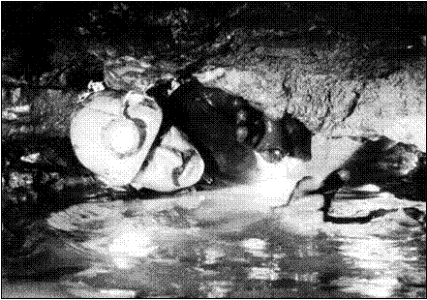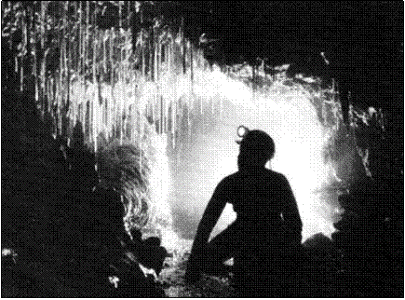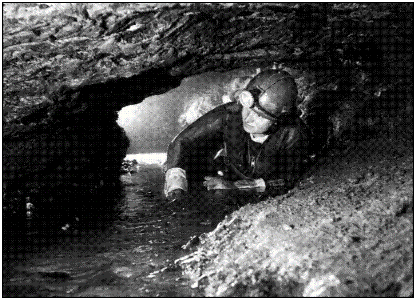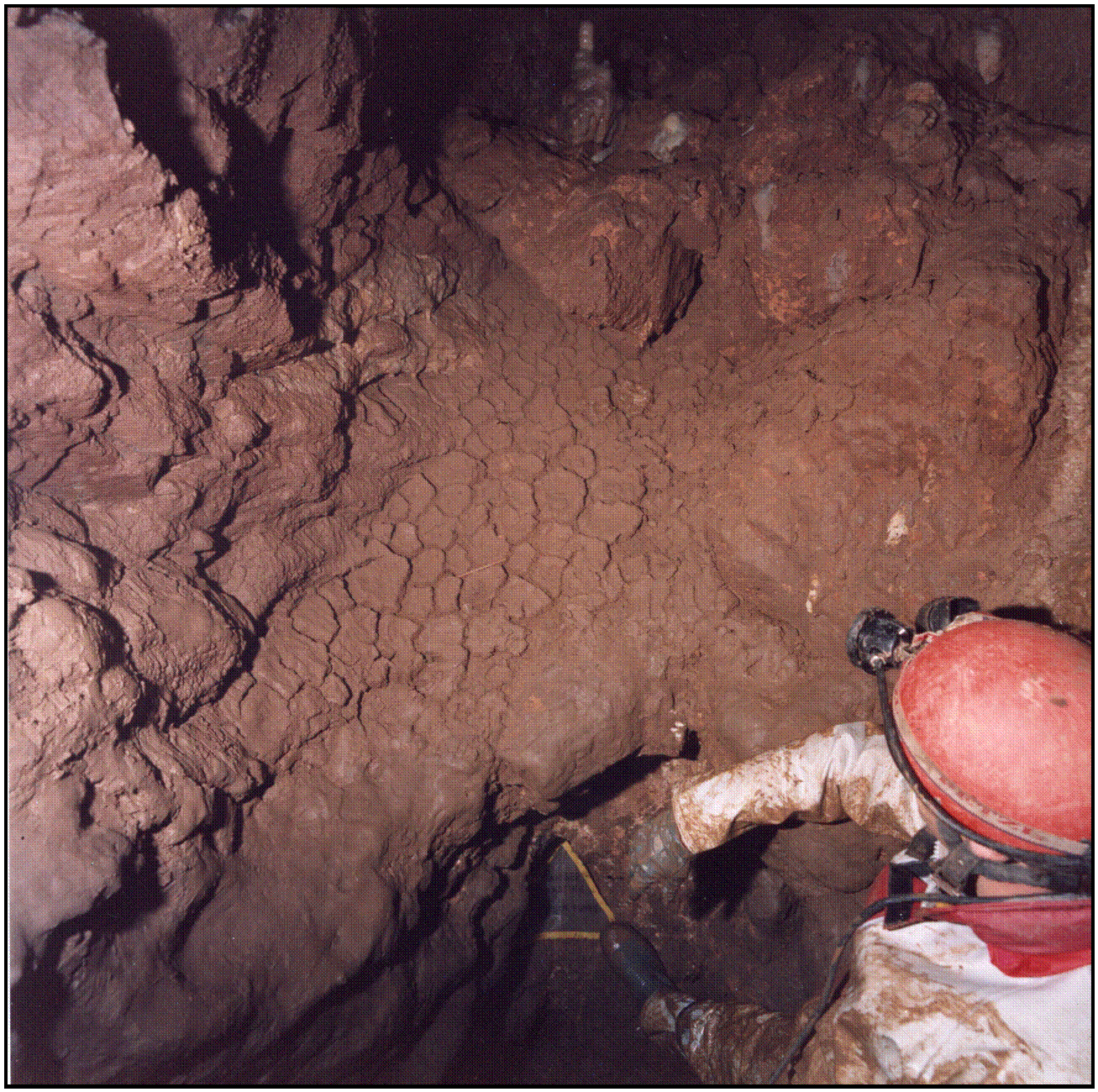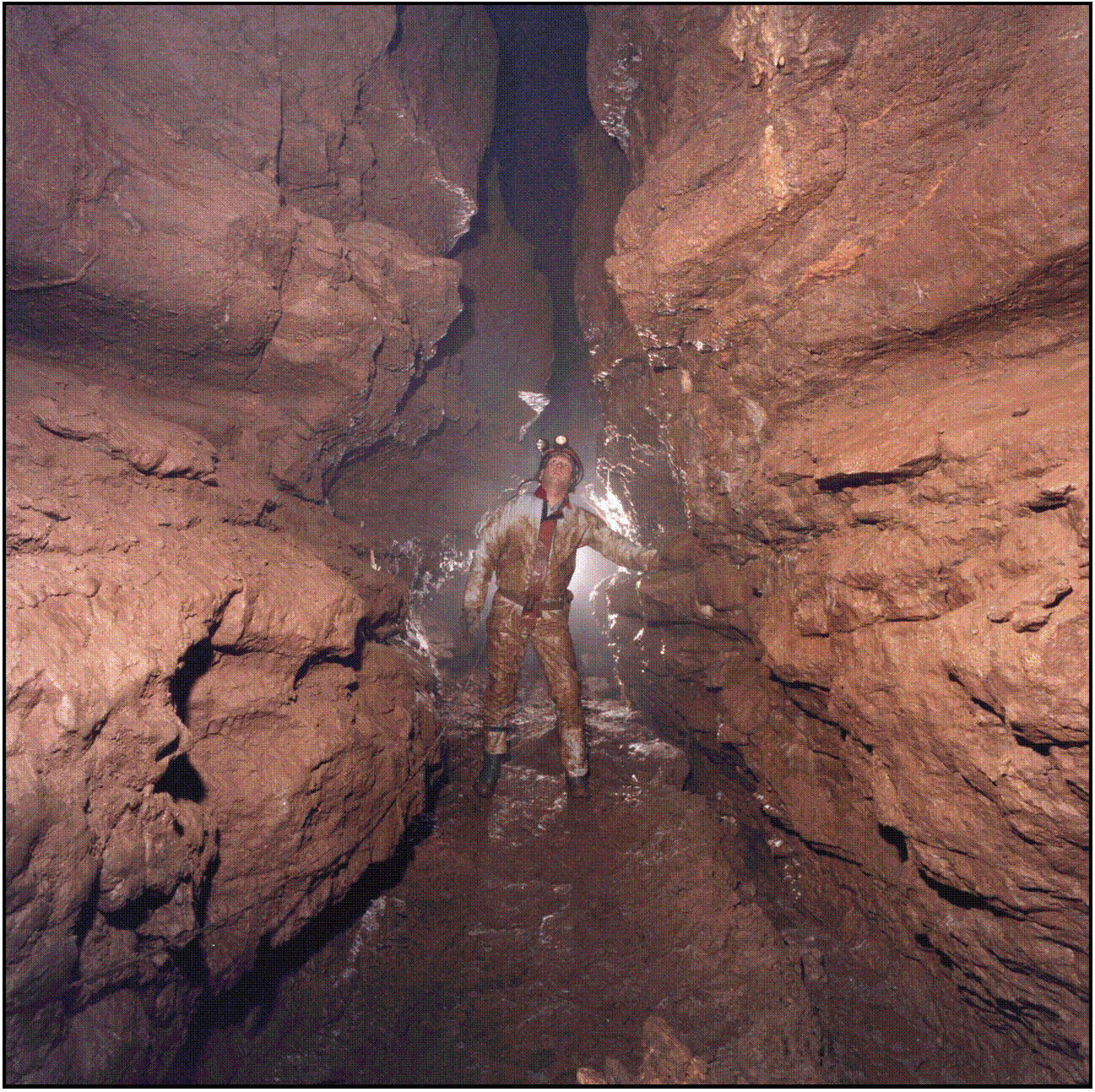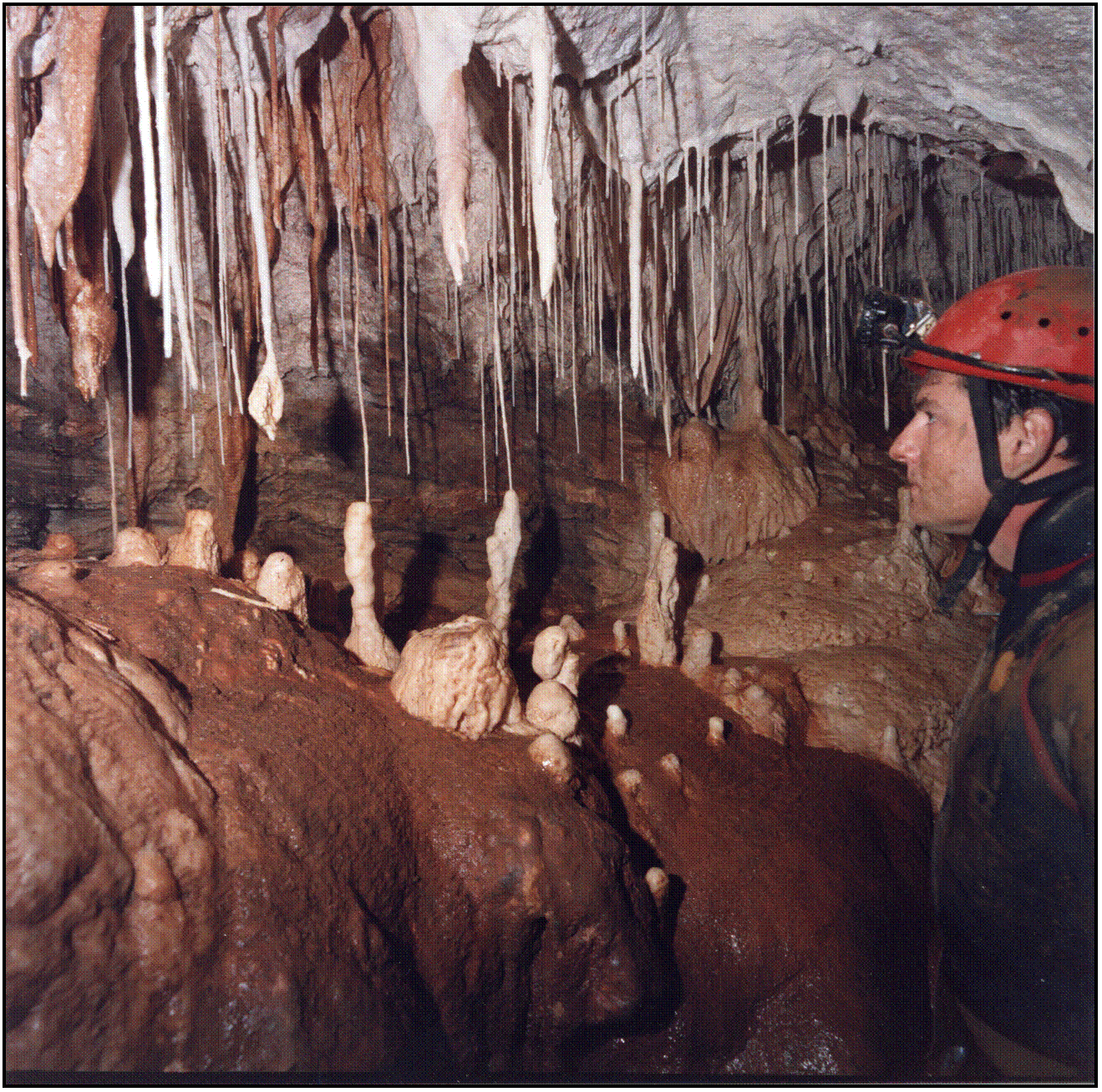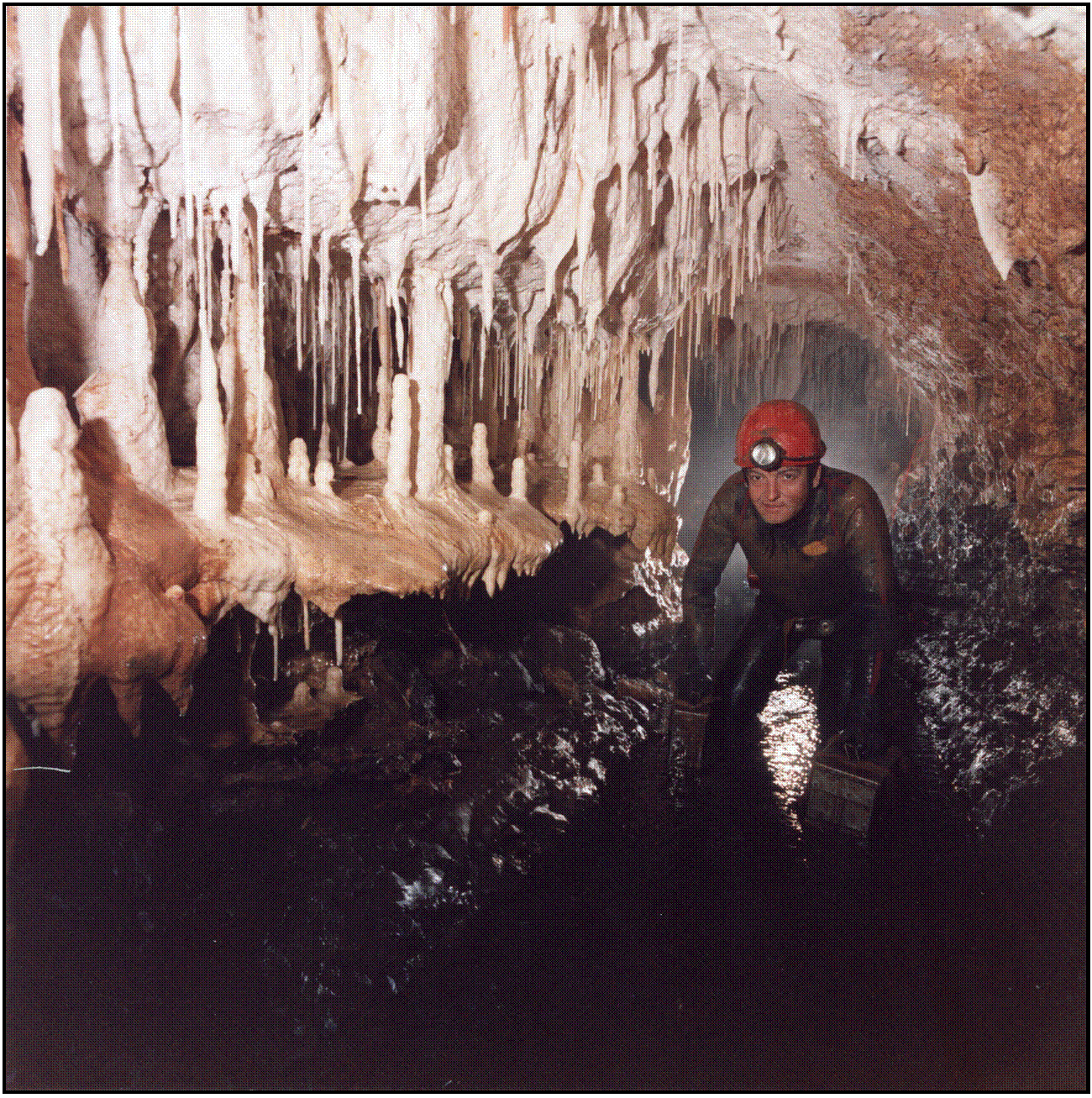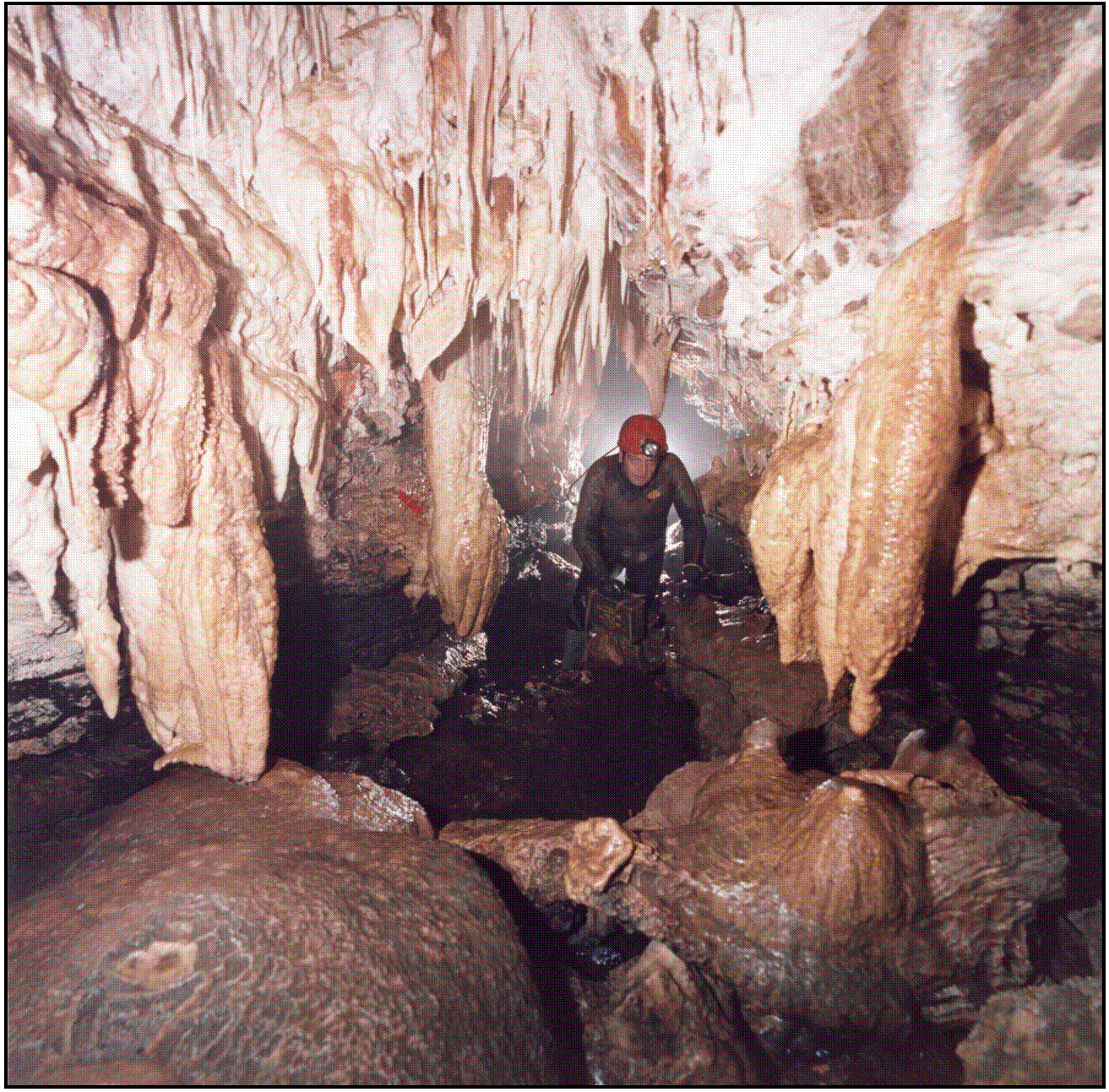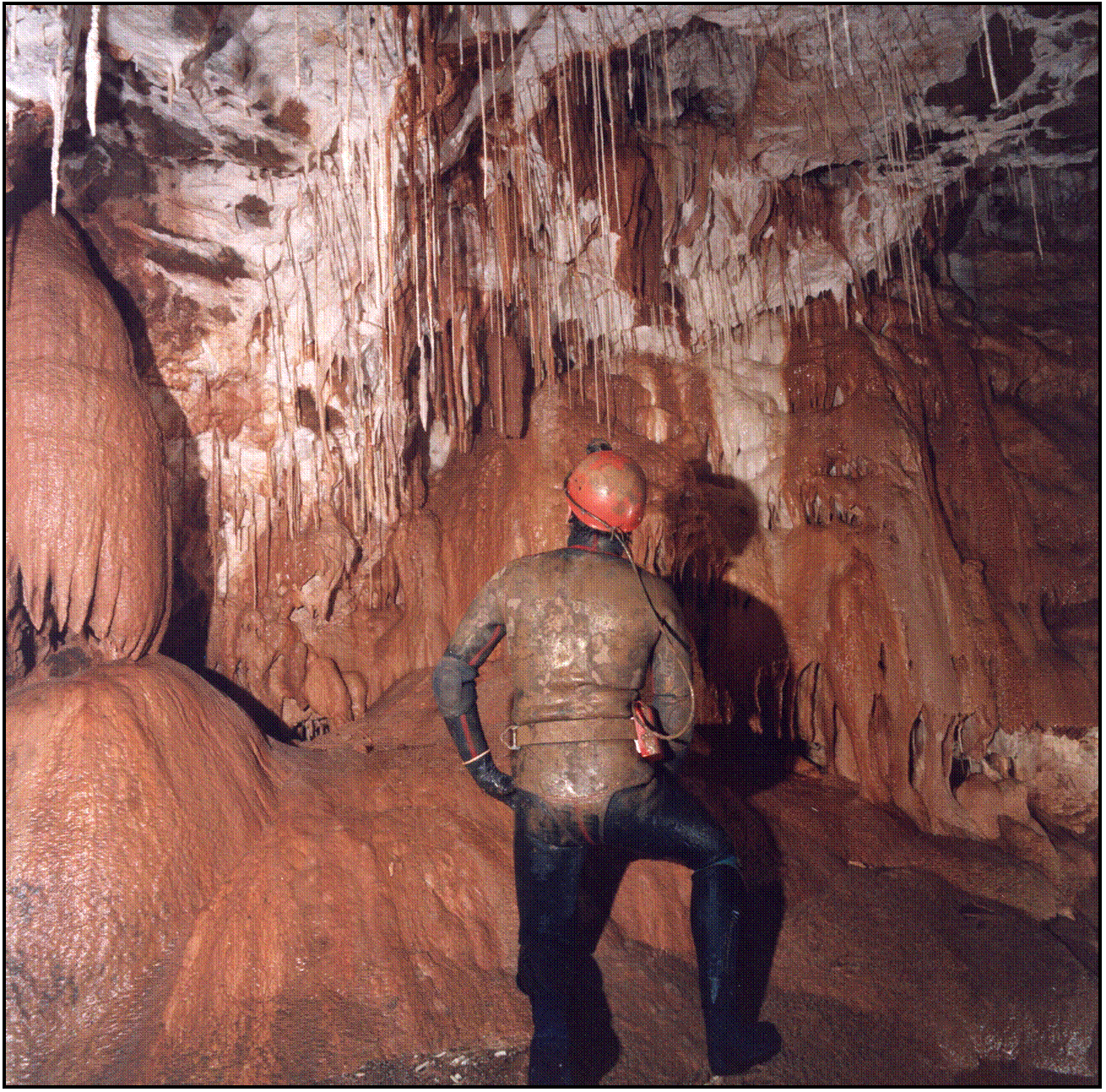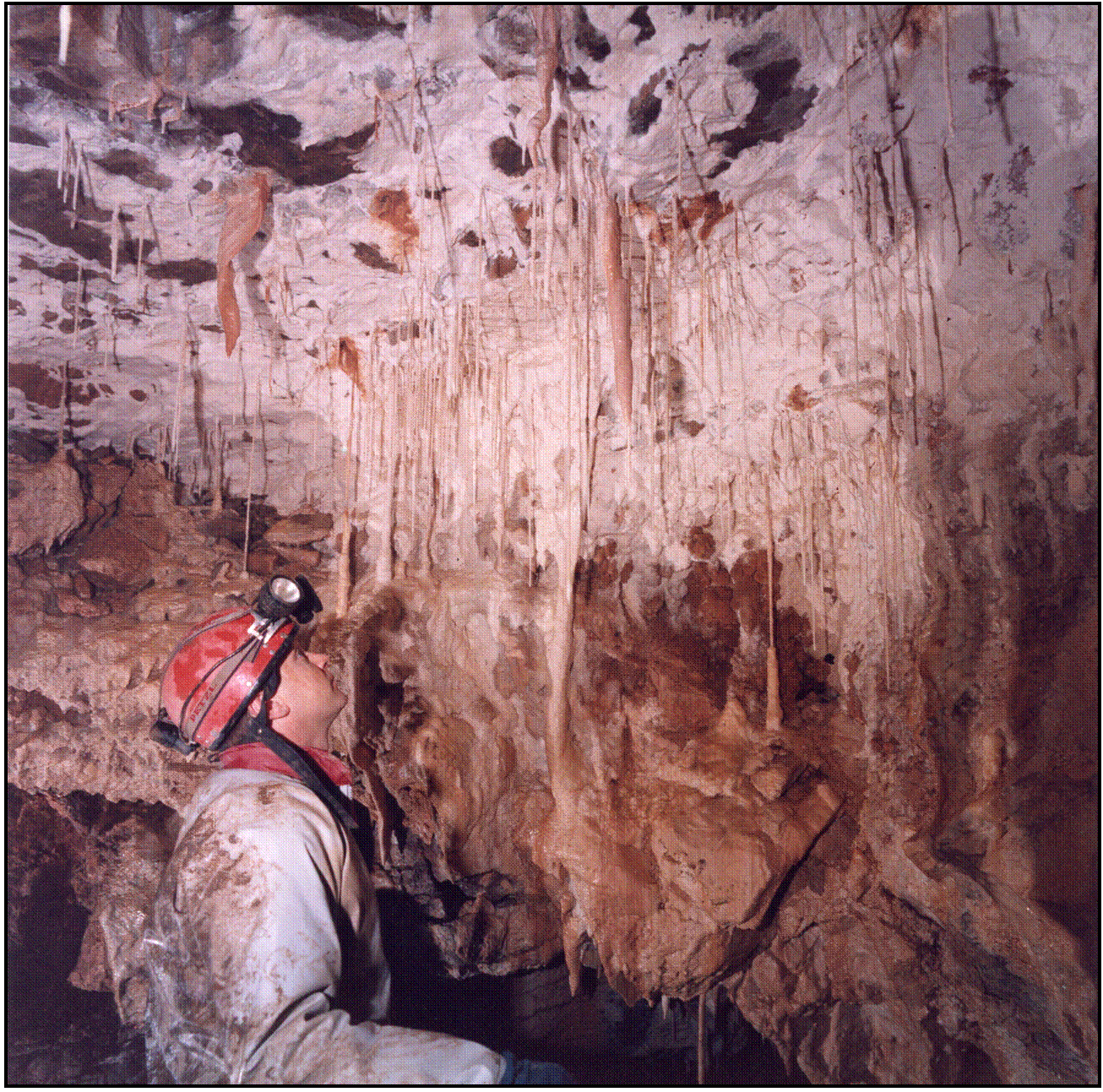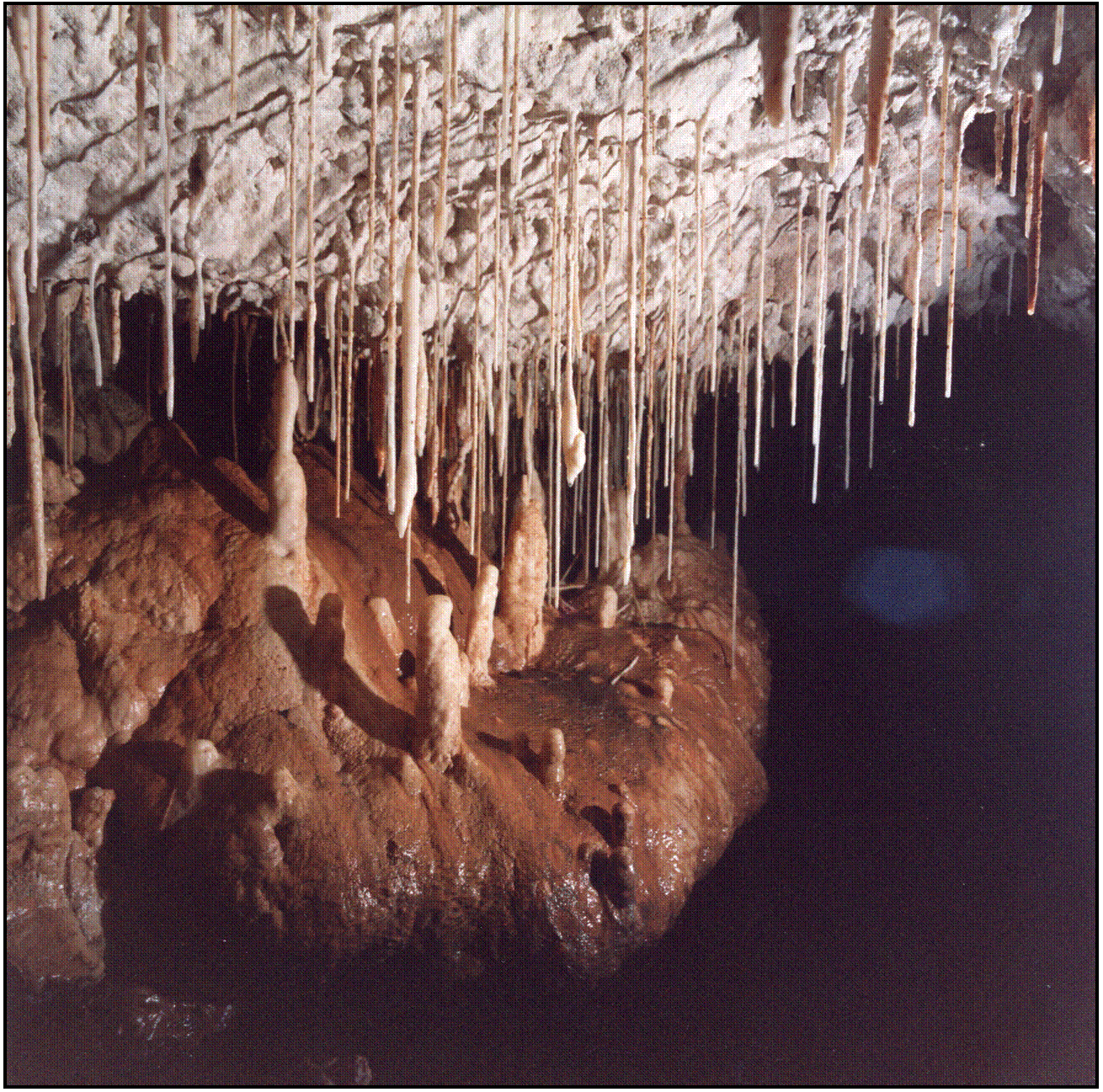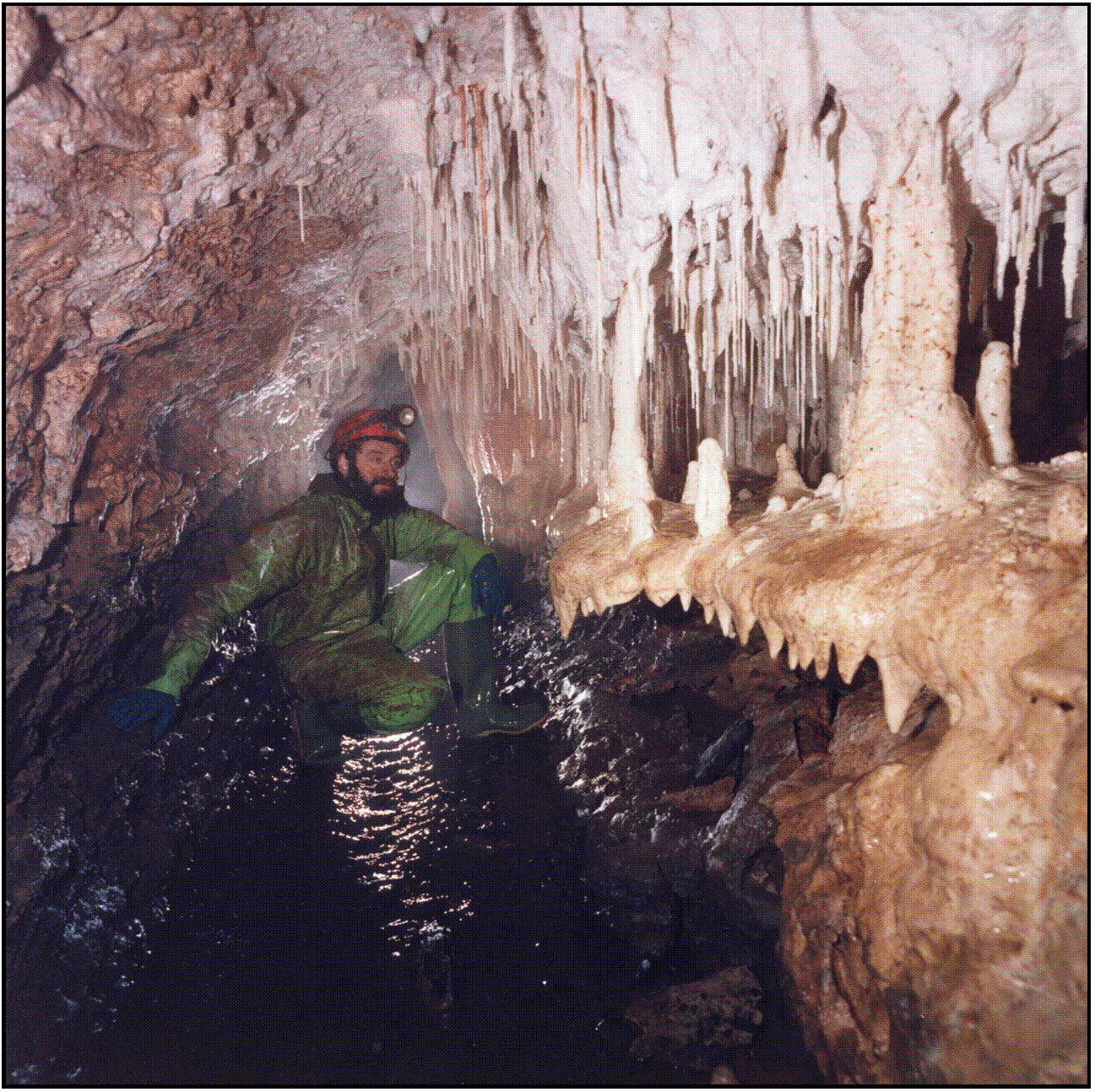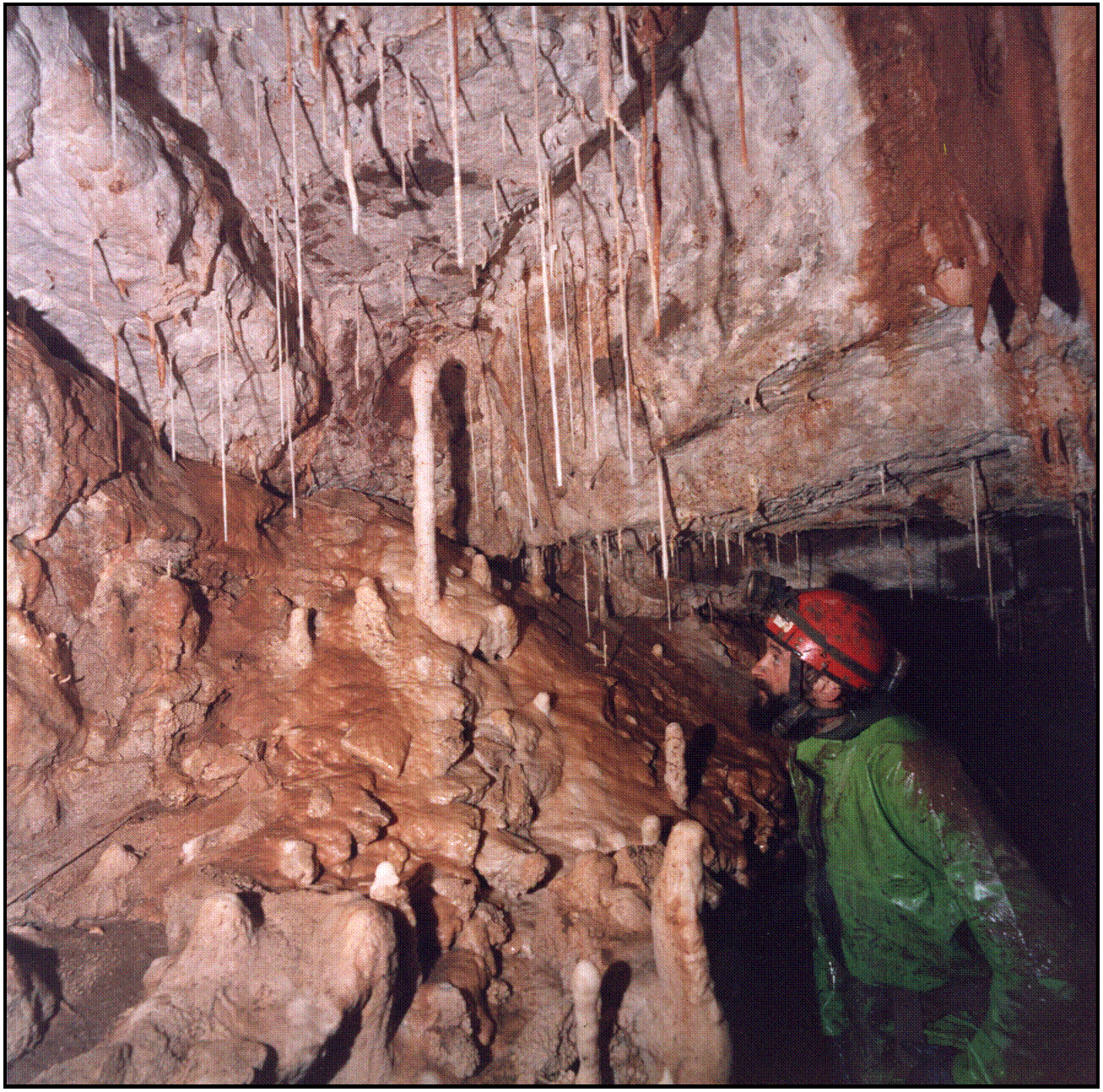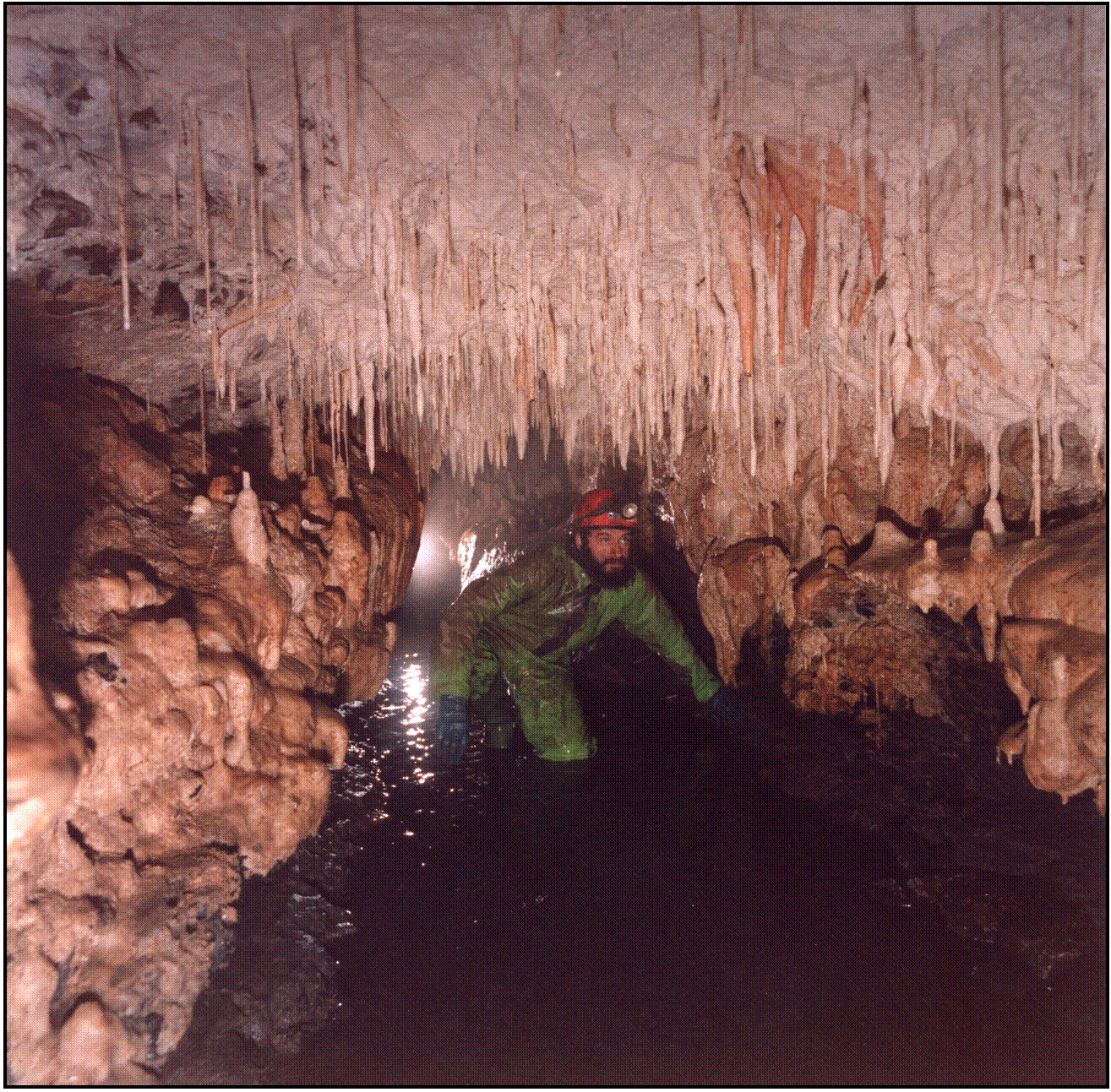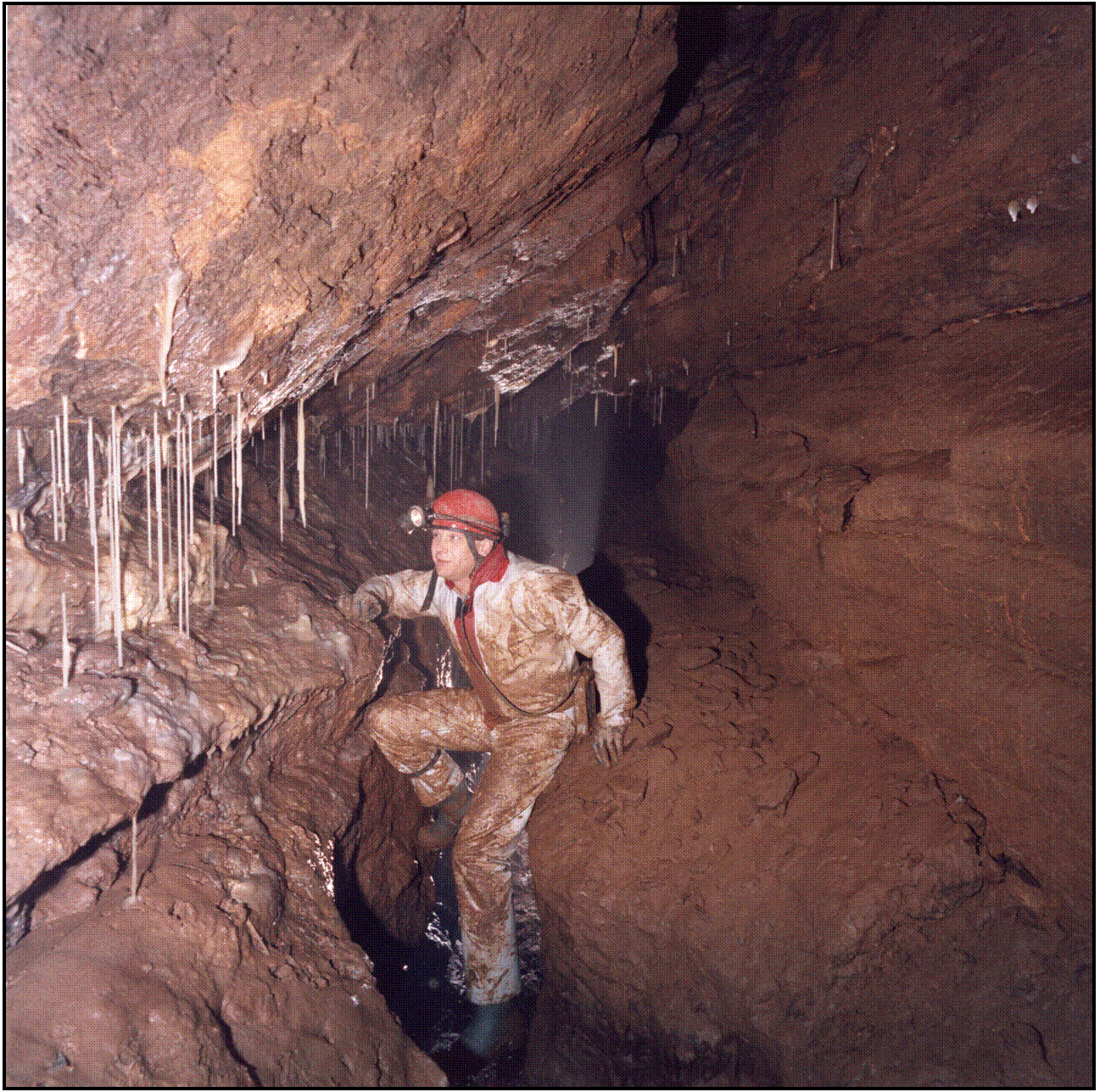The exploration of Blackmoor Valley, and
history of Upper Flood Swallet 1954-2008 (part 4)
1983 - slow but inexorable progress
In 1983, the cave ended at a pool and a stalagmite blockage. Geoff Barton found a soft fill on the left which broke up readily to reveal a cavity. Probing this, he dislodged sediment which could be heard splashing into water ahead. An unexpected sight was water flowing back from the developing crack. We wondered if we were heading into an inlet passage. Unfortunately the void closed down to solid fill.
Digging at this time consisted of putting an explosive charge at the face, generally on the right and just below water level, where it was possible to chisel out a cavity without the extreme effort normally required to drill shot holes by hand. It sometimes required more than one hauling trip to remove the debris produced and it required a lot of persuasiveness to get people on a hauling team. Fortunately, our newly-joined members were "encouraged" into lending a hand! Without their effort progress would have been exceedingly slow. Not all the spoil produced by blasting was removed from the cave because there was a muddy water-filled void below a shelving roof, and some fine sediment probably washed onwards. Thus the pool at the face was gradually back filled as we advanced.
The next discovery was made by Martin Rowe in May 1983. While working at the face he broke into a small cavity at roof level which took a chisel at arms length without impedance. It was later possible to shine a light along the hole which did not reveal any immediate enlargement.
At the beginning of June the "siege" was joined by Mike Haselden who devoted his explosive-handling ability to the task. At the end of the month the first obvious air current was detected. Summer 1983 was late starting, with cold winds and sleet driving surface workers underground for respite! In June the weather became exceedingly hot and it was on the scorching 16/06/83 while loading at the face that a distinctive outward airflow was felt coming from the roof hole mentioned earlier. Although the draft was not particularly powerful it was the first time in this cave that we had an identifiable air current.
Throughout the remainder of the year and during 1984, slow but inexorable progress was made at the rate of about 30cm each month. At times there were relatively large flows of water in the cave but most of it fortunately found its way into a small hole on the left at the start of our floor tip and only a small volume reappeared at the end.
The next interesting news from the cave came in November 1984 when Mike Haselden reported hearing a distant rumble from beyond the choke. Unfortunately no one else could confirm hearing a stream, leaving uncertainty as to the source of the sound.
By March 1985 we had reached the end of the eye hole in the roof and lost the draft, but fortunately the air remained fresh. The pool at the end could be probed a full arms length. What lay only a short way ahead could only be guessed at, but after 17 years of digging, it seemed that Upper Flood Swallet was about to reveal its secrets!
1985 - the breakthrough into Midnight Chamber
The easy part came on the 13-14/04/85 when, following the clearance of his previous weekend's bang debris, Mike Haselden was joined by Tony Knibbs, John Miriam, Jonathan Roberts and Denise Samuel (Knibbs). Squeezing through the small opening made by Mike, they entered some 150m of fabulous stream passage the like of which every digger dreams about.
|
|
|
Tony Knibbs in the squeeze leading to Midnight Chamber
photo C Howes |
Midnight Streamway
photo C Howes |
Denise Knibbs in the streamway
photo C Howes |
After 60m progress was halted where the Midnight Streamway disappeared under a large boulder. After a little effort, a way below the boulder was found and a further 60m of waterway, Sunset Boulevard, was followed downstream to a low tight bedding plane ending in a sump which could only be entered by arm.
Just before the wet bedding plane an awkward climb up led into a chamber which continued as a low flat out crawl over stalagmite to a blind end. This upper passage was roughly parallel to the wet bedding plane.
The cave was at last beginning to fulfill expectations, but even so, as on previous occasions it only revealed a relatively short portion of the potentially vast system.
Midnight Streamway - photos by Paul Deakin
or jump to:
| Back to top |
Page created 06 October 2009, last updated 14 February 2010
|

|

|
Mendip Caving Group. UK Charity Number 270088. The object of the Group is, for the benefit of the public, the furtherance of all aspects of the exploration, scientific study and conservation of caves and related features. Membership shall be open to anyone over the age of 18 years with an interest in the objects of the Group.
|
